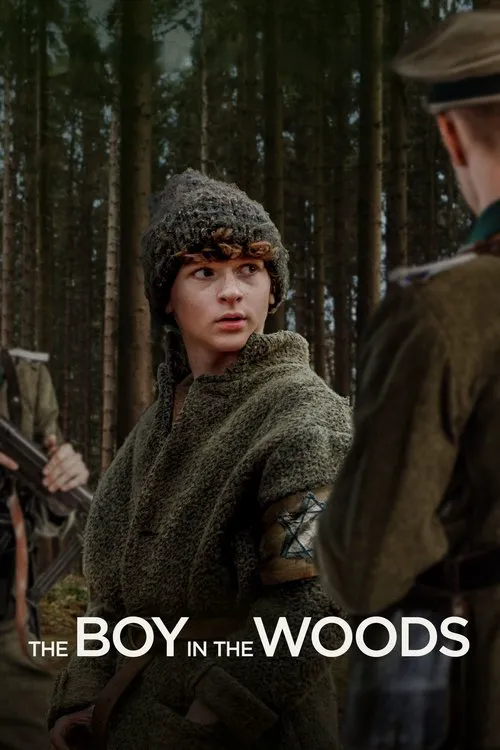The Boy in the Woods

Plot
The Boy in the Woods is a biographical drama that delves into the extraordinary true story of Max Eisen, a 16-year-old Jewish boy whose life was turned upside down by the Nazi occupation of Eastern Europe during World War II. Based on Eisen's memoir, the film masterfully weaves a narrative of survival, resilience, and hope amidst unimaginable chaos and cruelty. As the Nazis sweep across Eastern Europe, Max's family is forced to flee their home in the village of Sered, Czechoslovakia, to escape the wrath of the Third Reich. Along with his family, including his mother, father, and younger brother, they embark on a treacherous journey to find temporary refuge in the nearby woods. It is in this dense forest that they will attempt to live in hiding, awaiting an opportunity to escape the clutches of the enemy. As the family settles into their makeshift camp, Max takes on the responsibility of protecting and providing for his siblings, demonstrating a maturity and resourcefulness that belies his age. His father, though struggling to cope with the traumatic experiences they are enduring, becomes increasingly paranoid and withdrawn, adding to the family's emotional burden. Max's mother, desperate to safeguard her children, works tirelessly to maintain a semblance of normalcy, ensuring the family remains together despite the unrelenting danger that surrounds them. Living in hiding in the forest proves to be an arduous and brutal experience for the Eisen family. Starvation becomes a constant threat as they struggle to find food, and illness begins to take its toll. The family's small camp becomes a hotbed of fear, tension, and suspicion, as the ever-present risk of discovery hangs over their heads like a guillotine. During their time in the forest, Max and his family face numerous close calls. One such instance occurs when a group of Ukrainian collaborators, known for their ruthless treatment of Jews, stumble upon their camp. In a scene both heart-stopping and heart-wrenching, Max must think on his feet and devise a desperate plan to distract the collaborators and protect his family. His quick thinking and cunning allow them to narrowly escape disaster, but the consequences of this close call are only exacerbated by the subsequent anxiety and paranoia that grips the family. Despite these perilous circumstances, the Eisen family finds moments of beauty and humanity within their dire situation. Max forms an unlikely bond with a fellow Jew who has also escaped from the clutches of the Nazis. This tentative friendship provides a glimmer of hope in an otherwise desolate landscape, and together, they face the unforgiving reality of their existence. The cinematography in the film perfectly captures the atmosphere of desolation and desperation that permeates the Eisen family's existence. The camera pans over the stark, moonlit forest, emphasizing the isolation and vulnerability of the family's position. Each frame is suffused with an air of foreboding, reflecting the ever-present danger that lurks in every shadow. One of the most striking aspects of the film is its unflinching portrayal of the Nazi atrocities. The Boy in the Woods leaves no stone unturned in its depiction of the brutal treatment of Jews at the hands of the Nazi regime. The scenes in which the Eisen family encounters these atrocities are harrowing and disturbing, forcing the viewer to confront the darker aspects of human nature. Yet, even in the midst of unimaginable suffering, the film offers a glimmer of hope. Max Eisen's remarkable story is a testament to the resilience of the human spirit and the capacity for love and connection to overcome even the most daunting challenges. Despite being only 16 years old during his ordeal, Max emerges from the war as a remarkable individual, his experiences forging him into a courageous and compassionate person. The Boy in the Woods is not just a powerful biographical drama; it is also a testament to the enduring power of hope and the indomitable human spirit.
Reviews
Recommendations




